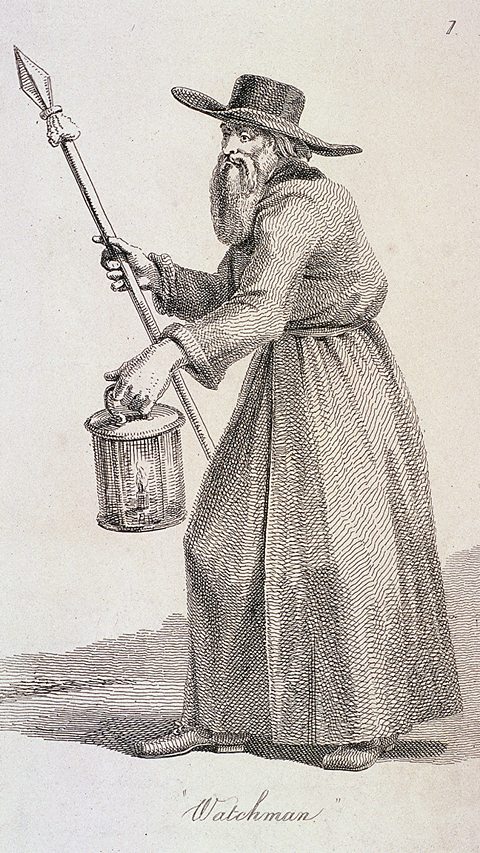Enforcing law and order - the people
There was no professional police force in the medieval period. The whole community was involved in the task of catching criminals and keeping the peace. They werenãt paid and carried out their responsibilities on a voluntary basis.
The king
- In theory, it was the king who held overall responsibility for maintaining what was known as the king's peaceThe kingãs duty to maintain law and order so people could go about their lives knowing that the law would be upheld.
- In practice, he was not able to control every part of the kingdom himself, so he relied on a range of local people in each area.
Sheriffs
- The sheriffThe monarchãs chief law enforcer in each county. was a powerful lord who acted as the kingãs agent in each county.
- He was unpaid but would often be given a share of the fines or property taken from convicted criminals.
- The role also came with a high status.
- If villagers failed to catch a criminal, the sheriff had the ability to call upon what was known as a posse comitatusA group of men aged 15 or over who were called up to chase a criminal. - a group of local men - to help track the culprit down.
- Any male over the age of 15 could be summoned to join the sheriffãs posse.
Coroners
- Each county had four coronerAn official responsible for investigating violent or suspicious deaths.
- With the help of local people, they had to investigate all sudden deaths in their area and record the evidence in a report to the sheriff.
Chief constables of the hundred
- Each county was divided into hundreds.
- Each hundred had two chief constables - usually wealthy farmers - who served for a year.
- Their main task was to make sure that free men between 15 and 60 years of age were ready to serve the king or sheriff if required.
Parish constables and watchmen

There were also parish constables, usually leading villagers, who served in the post for a year. They led the hue and cryA method of raising the alarm to the rest of the village after a crime had been committed, usually by shouting loudly. which ensured the people responded as they were supposed to when a crime occurred. They also had to make sure the village was ready to supply men for a posse or the kingãs army.
In towns, constables were aided by watchmenMen who patrolled the streets at night in order to prevent crime. They patrolled the streets at night and handed over suspicious people to the constable the following morning. Groups of watchmen were known as ãthe watchã.
Ordinary people
If a crime was committed, the victim needed to raise the hue and cry by shouting. The main responsibility of the rest of the village was to respond immediately and help to chase the criminal. Villagers could face being fined if they did not respond to the hue and cry.
All adult men were placed into a group of ten known as a tithingA group of ten men who were responsible for each otherãs behaviour. If one of the ten committed a crime, it was the duty of his tithing to bring him to court.